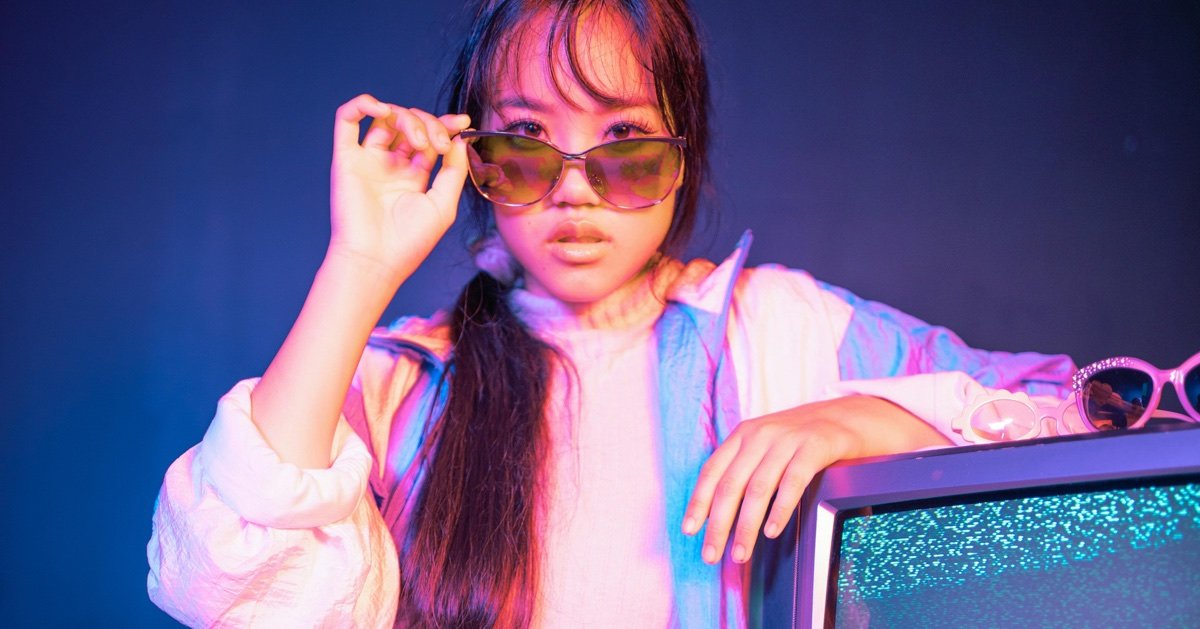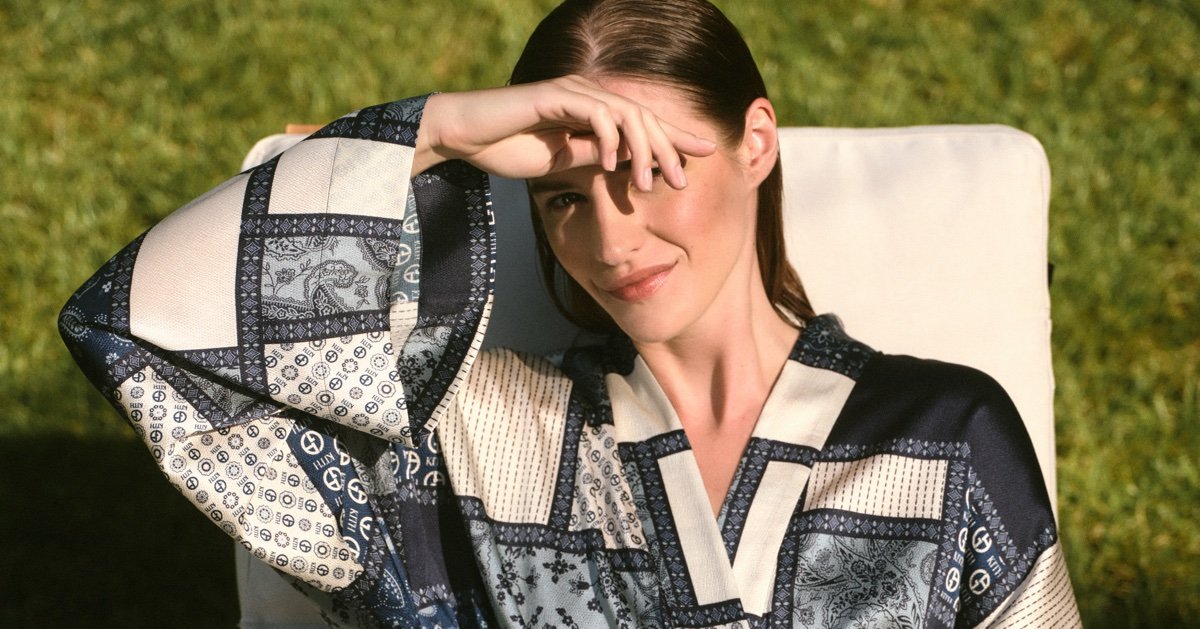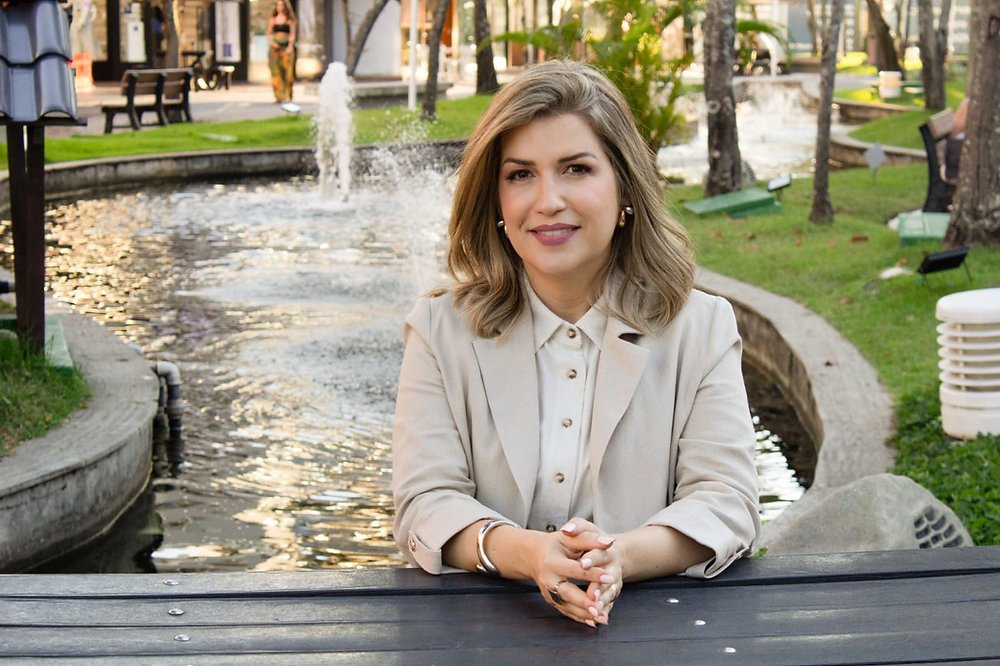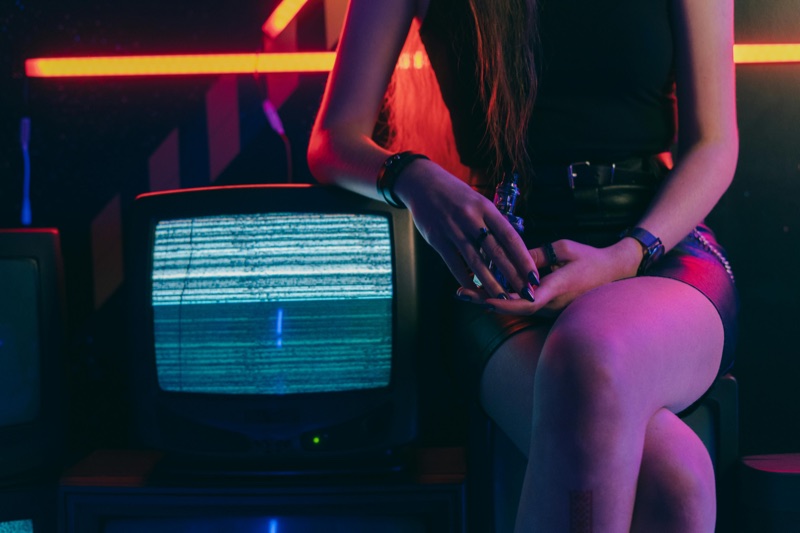
Lately, fashion photography has started to look a little older. It is not outdated, just intentional. The grain. The neon. That soft analog texture. It’s all back, and honestly? It’s everywhere.
The aesthetic of 1980s media in fashion photography is having a real moment, showing up in fashion editorials, brand campaigns, and even all over Instagram.
But why is everyone suddenly reaching for a decade that peaked in shoulder pads and magnetic tape? Let’s take a deeper look at fashion in the 1980s.
What Defined the Media Aesthetic of the 1980s?
Before it became a creative reference point, 1980s media was just how things looked. Visual noise, color bleeding, and overexposure were all byproducts of analog technology at the time. However, all those quirks ultimately shaped a distinct aesthetic that today’s creatives are deliberately trying to recreate.
That was also the decade when 80s pop culture exploded across every channel, from MTV music videos to over-the-top magazine layouts.
Everything was styled to grab attention, whether it was a perfume ad or a band poster. That same energy, featuring fast cuts, clashing colors, and unapologetic excess, is exactly what echoes in fashion photography today.
Why the Sudden Comeback?
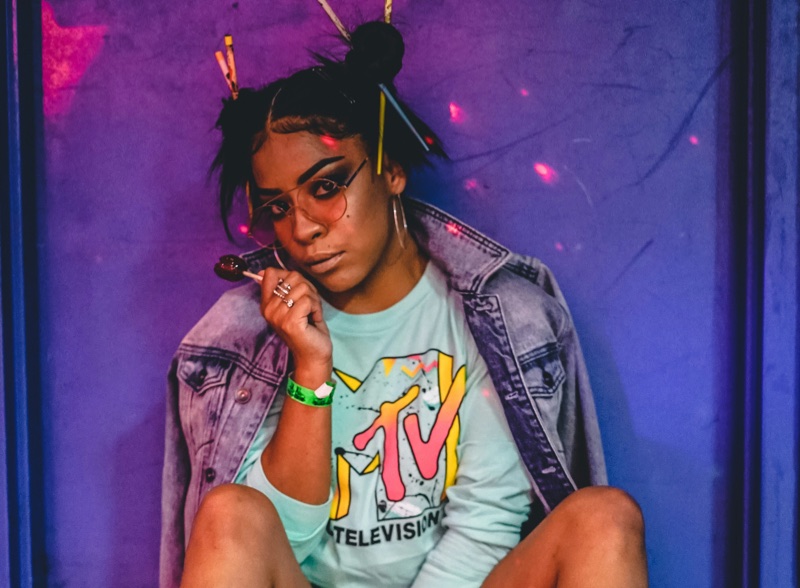
Right now, digital culture is crisp, filtered, and obsessively curated. So, it makes sense that creatives are reaching for something that feels the exact opposite: raw, unpredictable, and flawed in the best way.
The gritty charm of VHS static or overexposed flash feels human. It breaks the digital polish we’ve grown used to.
Some people are drawn to it because it reminds them of something they grew up with. In truth, a recent poll posted by GWI indicates that approximately 65% of Gen X members, born between 1964 and 1982, feel nostalgic for the 1980s.
When it comes to younger generations, Gen Z and millennials, they are drawn to the 80s aesthetic because it feels new and different, like a world they’ve missed but want to experience.
There’s also a pull toward tactility. Something about grain, blur, and real lighting feels more intentional than perfectly lit edits. It gives the image weight. Texture. It is like you could touch it instead of just double-tapping it.
Caption: Using 1980s media in fashion photography helps Gen Z and millennials break away from digital perfection
Alt. text: People using an old camera
How Retro Media is Showing up in Fashion Photography Today
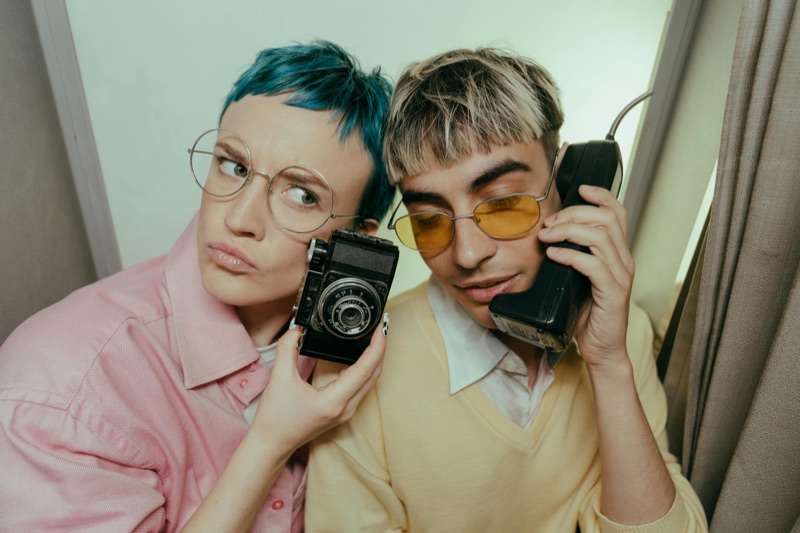
It’s not just the vibe that’s back. It’s the visuals, techniques, and styling choices pulled straight from 1980s media playbooks. Photographers and creative directors are leaning into the era’s aesthetic cues to give their work more texture, personality, and attitude. Sometimes, it’s subtle. Sometimes, it looks like a lost frame from a music video in 1987.
Let’s break down where it’s showing up the most.
VHS-Style Filters and Tape Distortion
That fuzzy tape grain, glitchy static, and warped color bleed? It’s everywhere – on magazine covers, in Instagram carousels, and even in high-end campaigns. Some creatives shoot on actual VHS, while others mimic the look with overlays and effects.
It adds a sense of movement, nostalgia, and imperfection, like the photo is living in memory instead of on a mood board.
Lighting, Color, and Framing Throwbacks
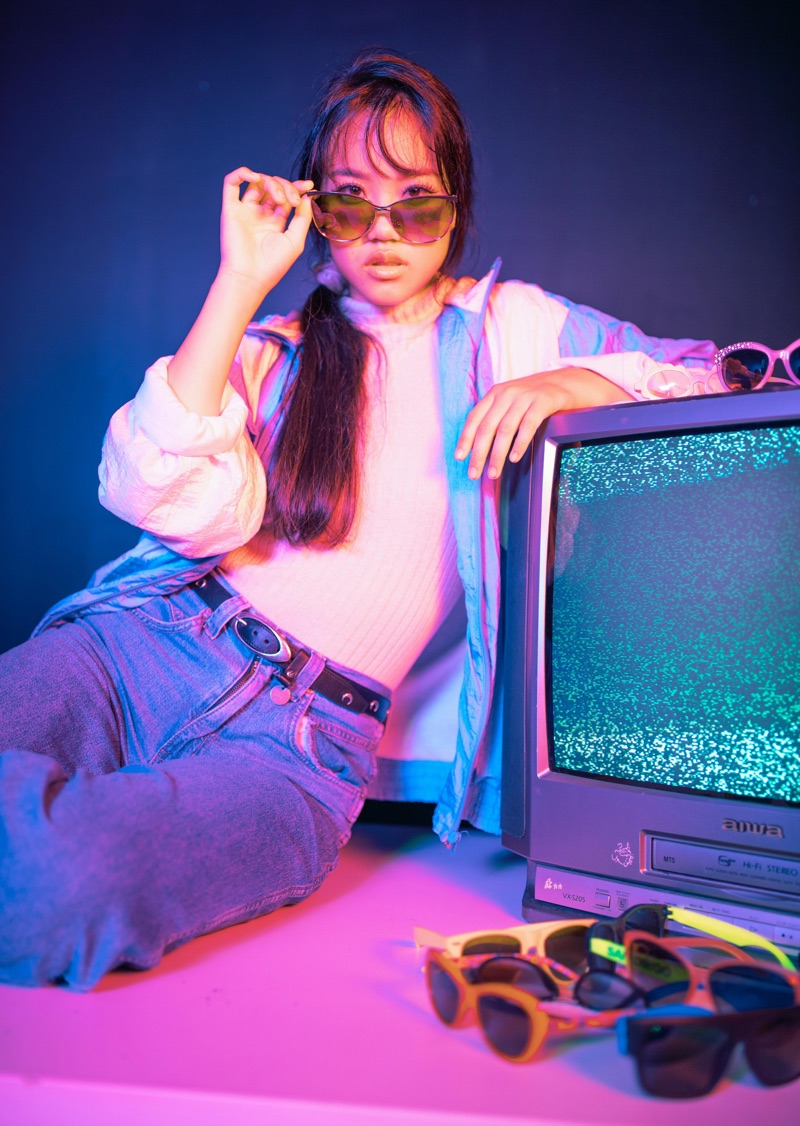
The lighting is harsher. The colors are louder. And the compositions? They’re less ”curated” and more spontaneous. Flash photography, direct framing, and off-kilter poses all nod to 1980s fashion shoots and tabloid-style candids.
Editorial Styling Influenced By The Decade
Think bold makeup, feathered hair, oversized silhouettes, shiny fabrics, and high-cut bodysuits. Today’s stylists are pulling visual cues from aerobics tapes, music videos, soap operas, and retro catalogs and reworking them for a modern lens.
Notable Photographers and Campaigns Embracing the Trend

Several top photographers and fashion brands have embraced 80s-style visuals to create bold, nostalgic campaigns. Their work blends analog textures, vintage lighting, and lo-fi effects to bring a distinctly retro mood into modern fashion storytelling.
Gucci x Harmony Korine (Cruise 2020 Campaign)
Gucci’s campaign, shot by cult filmmaker Harmony Korine, channeled pure 80s energy. Set in Rome, the visuals featured VHS-style blur, oversaturated colors, harsh flash, and surreal, low-fi framing that looked straight out of a warped rental tape. It was intentionally chaotic and dripping with retro cinema references.
Campbell Addy for i-D Magazine
British-Ghanaian photographer Campbell Addy often plays with contrast-heavy lighting and grain that nods to vintage editorial aesthetics.
In his 2022 cover shoot for i-D, Addy blended classic 80s fashion references:
- Chunky jewelry
- Bold eyeshadow
- Synthetic textures
With modern subjects and messages.
Petra Collins for Adidas Originals
Petra Collins is known for her dreamy, nostalgia-drenched style, but in her campaign work for Adidas, she brought in sharper VHS aesthetics: soft lighting gradients, analog noise, and color fading that feel lifted from a 1980s home video.
Marc Jacobs Heaven lookbooks
The Heaven by Marc Jacobs line regularly taps into the 80s and 90s media textures. Their campaign photography often includes off-kilter flash, layered tape effects, and lo-fi styling that reads like a teenage bedroom zine.
Tyler Mitchell’s Editorial Work for Vogue
Though best known for his soft, dreamlike tones, Tyler Mitchell has experimented with analog formats and 80s-influenced styling. In select Vogue editorials, he’s played with color blocking, exaggerated poses, and vintage lighting setups reminiscent of 80s high-fashion covers.
Dazed Magazine Editorials
Dazed often features photographers who lean into retro-tech aesthetics. Editorials from contributors like Thurstan Redding or Hanna Moon incorporate film grain, flat lighting, overexposure, and stark contrast.
The Future of the Past
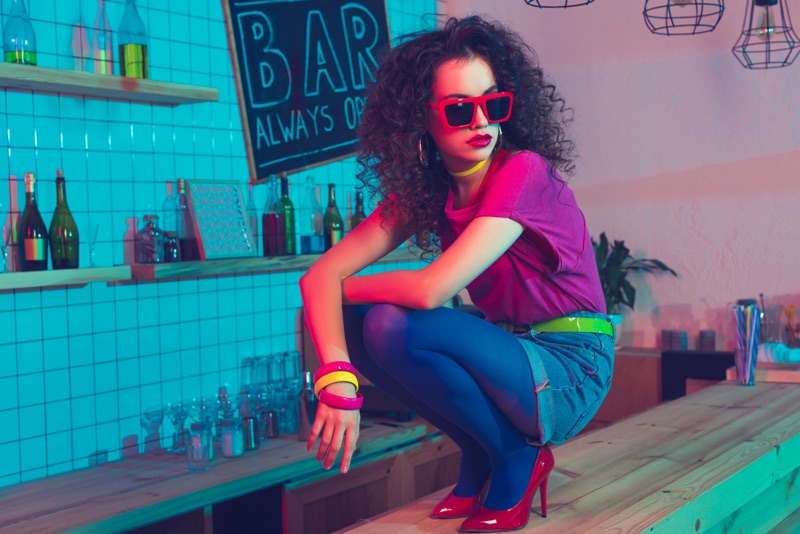
Fashion has always borrowed from the past, but this time, it goes beyond the clothes. The comeback of 1980s media in fashion photography demonstrates how visual texture, mood, and imperfection can carry just as much weight as styling or design.
What we’re seeing now is not about copying a decade but about reviving its energy, turning analog glitches, hard flash, and over-the-top color into tools for storytelling.
Whether it’s a major brand campaign or an experimental shoot on VHS, the 80s fashion aesthetic isn’t going anywhere. It’s being reworked, reimagined, and made new again through the lens of now. And honestly? That grainy, blown-out future looks pretty good.

